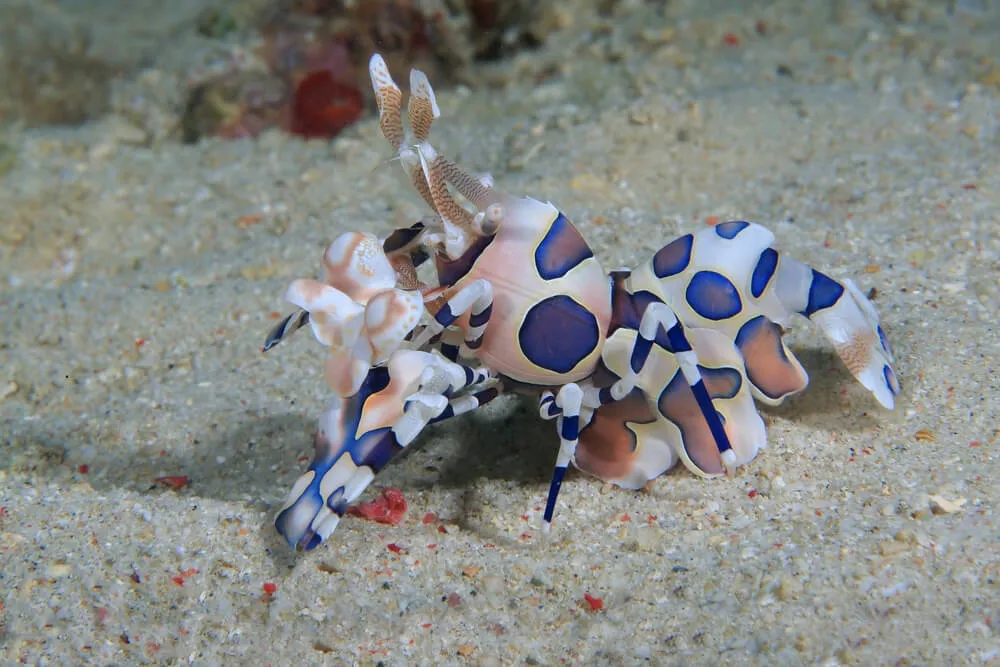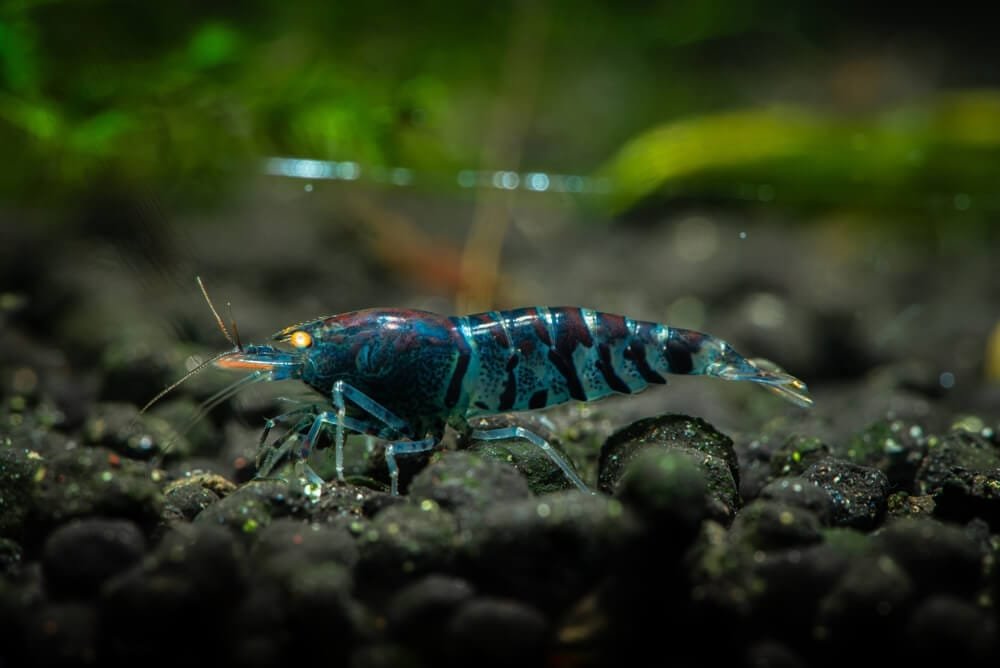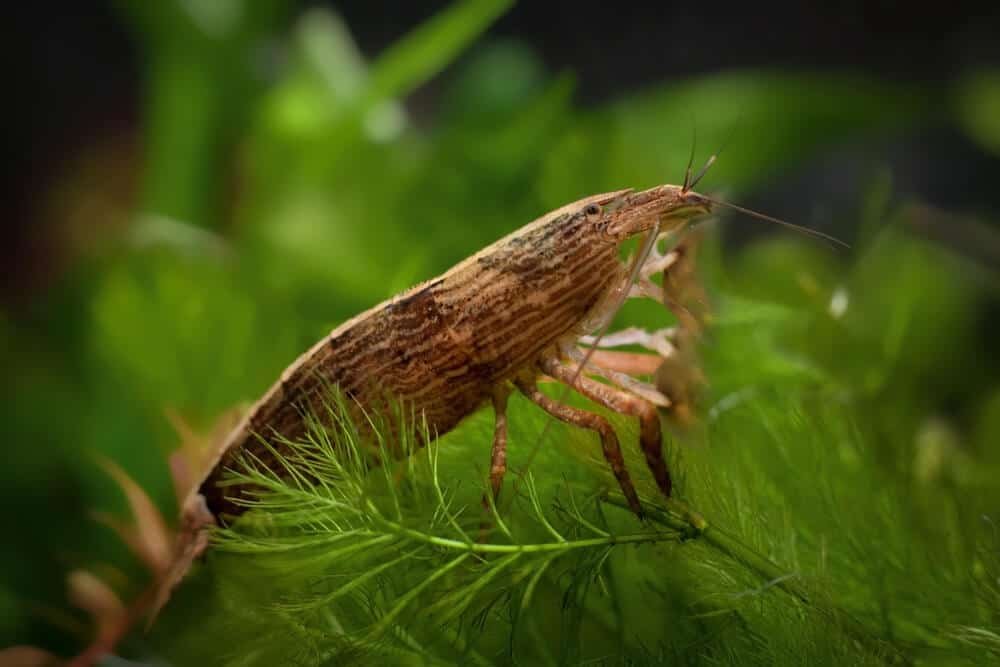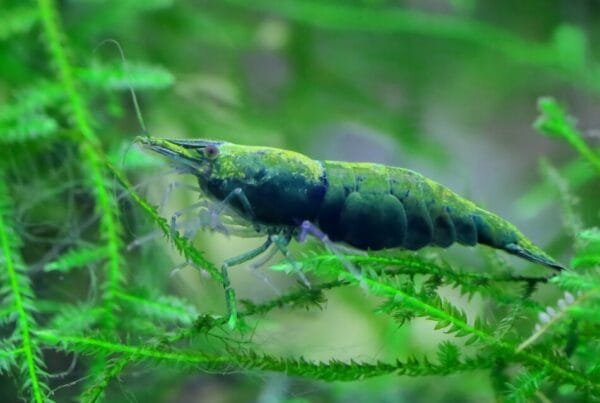Get ready to be captivated by the enchanting beauty of the Harlequin Shrimp. With its vibrant colors and intricate patterns, this remarkable creature is a true marvel of the sea. Found in tropical waters, the Harlequin Shrimp stands out among its peers with its stunning appearance and fascinating behavior. In this article, you will discover why these shrimp are a sight to behold and gain insights into their unique characteristics. So, immerse yourself in the world of the Harlequin Shrimp, where beauty and grace converge in a mesmerizing display.
Physical Description
Size and shape
The Harlequin Shrimp is a small crustacean that typically measures around 2 inches in length. Its body is compact and round, with a slightly flattened appearance. The shrimp’s pincers are relatively large compared to its body, making them quite noticeable. The overall shape is reminiscent of a miniature lobster.
Coloration
The Harlequin Shrimp is known for its striking and vibrant coloration. Its body is predominantly white, with vivid patches of orange, blue, and purple. These colors are arranged in a distinctive striped or patchy pattern, giving the shrimp a unique and eye-catching appearance. The bright coloration serves as a warning signal to potential predators, indicating that the Harlequin Shrimp is toxic or distasteful.
Habitat
Natural habitat
The Harlequin Shrimp is primarily found in the tropical waters of the Indo-Pacific region. It inhabits coral reefs and rocky areas, where it seeks shelter and food. These shrimp have a preference for living in relatively shallow waters, typically between 10 to 100 feet deep. They can often be found hiding among coral branches or in crevices.
Distribution
The Harlequin Shrimp has a wide distribution across its natural range. It can be found in various countries, including Australia, the Philippines, Indonesia, and Thailand. While it tends to favor specific locations within these countries, its distribution is not limited to a single area. The availability of suitable habitat and prey resources contributes to the shrimp’s widespread distribution.
Diet
Preferred prey
The Harlequin Shrimp has a unique and specialized diet. It is known to feed exclusively on starfish, particularly those belonging to the Acanthasteridae family. These starfish, commonly referred to as crown-of-thorns starfish, are considered pests in coral reef ecosystems due to their ability to consume large amounts of coral. The Harlequin Shrimp helps control their population by actively hunting and consuming them.
Feeding behavior
When hunting starfish, the Harlequin Shrimp displays fascinating feeding behavior. It typically begins by flipping the starfish onto its back, which renders the starfish immobile and exposes its vulnerable underside. The shrimp then uses its powerful claws to tear apart the starfish’s body and feed on its flesh. This methodical approach allows the Harlequin Shrimp to efficiently consume its preferred prey.
Behavior
Mating and reproduction
Harlequin Shrimp exhibit monogamous behavior when it comes to mating and reproduction. Once a pair forms a bond, they remain together for life. To initiate mating, the male and female engage in an elaborate courtship dance, where they engage in synchronized movements and display visual signals to communicate their readiness to mate. After successful mating, the female will lay clusters of eggs, which the male then diligently tends to until they hatch.
Territorial behavior
Harlequin Shrimp are known to be territorial creatures. They establish and defend their territory, often within a specific coral or crevice that they call home. These shrimp will display aggressive behavior towards intruders, using their large claws to deter potential threats. Their territoriality helps ensure a stable food supply and protects their nesting sites.
Adaptations
Claws and appendages
The Harlequin Shrimp possesses unique adaptations in its claws and appendages that aid in its feeding behavior. Its powerful claws are perfectly designed for breaking open the tough bodies of starfish. The shrimp’s appendages also feature specialized structures that allow it to grip and manipulate the starfish with precision. These adaptations provide the necessary tools for the Harlequin Shrimp to successfully hunt and consume its preferred prey.
Eye structure
The Harlequin Shrimp has remarkable eyesight, which aids in its hunting and navigation abilities. Its eyes are situated on stalks, enabling them to rotate and scan the surroundings for potential prey or threats. The shrimp’s eyes are particularly sensitive to movement, allowing it to quickly detect the subtle movements of starfish or other prey items. This keen visual acuity is essential for the Harlequin Shrimp’s survival in its natural habitat.
Predators
Natural enemies
While the Harlequin Shrimp possesses toxin-like compounds in its body that make it unpalatable to many predators, it does have some natural enemies. Various species of larger fish, such as grouper or snapper, may prey upon these shrimp if given the opportunity. Additionally, some larger crustaceans and cephalopods may pose a threat to the Harlequin Shrimp, particularly if they are caught unprotected or away from their sheltered hiding places.
Defensive strategies
To defend itself against potential predators, the Harlequin Shrimp relies on several defensive strategies. Apart from its toxic nature, it will often retreat into crevices or coral branches when threatened, making it difficult for predators to reach them. Their territorial behavior further helps deter potential attackers, as the shrimp will aggressively defend their chosen dwelling. These tactics and adaptations increase the chances of survival for the Harlequin Shrimp.
Conservation
Threats
The Harlequin Shrimp faces several threats to its survival. One of the main challenges is the degradation and destruction of its coral reef habitats caused by human activities such as coastal development and destructive fishing practices. Overfishing of key prey species, such as starfish, can also have an indirect impact on the Harlequin Shrimp’s population. Additionally, pollution and the impacts of climate change, such as ocean acidification and rising sea temperatures, pose significant threats to the shrimp’s habitat.
Protection efforts
Efforts are underway to protect the Harlequin Shrimp and its coral reef habitats. Marine protected areas are being established to create safe zones where the shrimp and other marine species can thrive without human interference. Conservation organizations are also working to raise awareness about the importance of sustainable fishing practices and the need to reduce pollution. By promoting responsible tourism and supporting scientific research, conservation efforts aim to safeguard the Harlequin Shrimp and the delicate ecosystems it inhabits.
Interesting facts
Partnership with sea stars
While Harlequin Shrimp primarily feed on starfish, there is a fascinating partnership between these shrimp and certain species of sea stars. The shrimp act as cleaner organisms, offering their services to the sea stars by removing parasites and debris from their bodies. This mutually beneficial relationship benefits both parties involved and highlights the intricate dynamics of marine ecosystems.
Lifespan
In the wild, Harlequin Shrimp have an average lifespan of approximately 2 to 3 years. However, in aquarium settings, where they are provided with optimal conditions and a consistent food supply, they can live for up to 5 years or more. Proper care and attention to their specific requirements can help maximize their lifespan and ensure their well-being in captivity.
Aquarium keeping
Suitable tank setup
To keep Harlequin Shrimp in an aquarium, it is important to replicate their natural habitat as closely as possible. This includes providing ample hiding places, such as coral branches or rock crevices, where they can seek shelter. The tank should have a sandy substrate and be maintained at appropriate water parameters, including a temperature between 72°F to 78°F and a pH level of 8.1 to 8.4. Regular water quality maintenance and monitoring are essential to ensure a healthy environment for the shrimp.
Compatible tank mates
When choosing tank mates for Harlequin Shrimp, it is crucial to select species that are peaceful and not predatory. Some suitable options include small reef-safe fish, such as gobies, blennies, or small wrasses. Avoid keeping the shrimp with larger and aggressive fish that may view them as potential prey. Additionally, it is advisable to avoid housing multiple pairs of Harlequin Shrimp together, as territorial conflicts between them can occur.
Availability in the pet trade
Demand and popularity
Harlequin Shrimp are highly sought after by marine aquarium enthusiasts due to their unique beauty and fascinating feeding behavior. Their vibrant coloration and specialized diet make them an intriguing addition to any reef tank setup. However, their specific requirements and specialized diet mean they are not suitable for every aquarist. The demand for Harlequin Shrimp remains relatively high, but their popularity is somewhat limited by their availability and the challenges of meeting their care needs.
Sourcing responsibly
When considering acquiring a Harlequin Shrimp as a pet, it is crucial to source it responsibly. Avoid purchasing shrimp that have been acquired through harmful collection methods or unsustainable practices. Look for suppliers that prioritize sustainable and ethical sourcing, such as those involved in captive breeding programs. By supporting responsible suppliers, you contribute to the conservation of this remarkable species and help ensure its long-term survival.
Conclusion
The Harlequin Shrimp is a captivating and beautifully colored crustacean found in the tropical waters of the Indo-Pacific region. With its specialized diet, unique adaptations, and fascinating behavior, it stands out as a unique species in the marine ecosystem. While facing threats to its survival, conservation efforts and responsible aquarium keeping can contribute to the continued existence of these remarkable shrimp. If you’re fortunate enough to witness a Harlequin Shrimp in person or care for one in an aquarium, you’ll be treated to a truly extraordinary experience.







